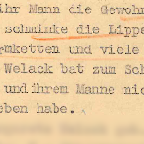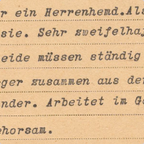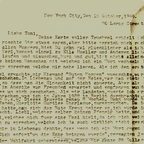Name Change

© German Federal Archives Berlin.
Excerpt from *Gert Liehr's name change file

Magnus Hirschfeld, Geschlechtskunde. Bildteil, p. 326. © Scan from the holdings of the Magnus-Hirschfeld-Society Berlin, © qualitatively reworked by Clara Hartmann.
Content warning: In this text Anti-Semitism is discussed.
This is an excerpt from the application for a first name change by the transmasculine spinning mill worker *Gert Liehr, which he submitted to the Ministry of the Interior in August 1934. For such applications, the homosexual department was responsible for checking whether a first name change would endanger “public safety”. This means the police checked whether the people could move around in public in the gender they identified with without causing a stir. This control mechanism was primarily implemented to preserve gender binary social norms. Those who, for example because of their physique, did not meet such standards were generally criminalized as troublemakers. A medical report was also required for a legal name change. Only after all the necessary documents had been submitted the final decision was made at the Ministry of the Interior.
In the middle of Liehr's application process, the Berlin homosexual department was integrated into the Gestapo. Nevertheless, Liehr's suicidal thoughts had a positive influence on the authorities' decision, unlike in Charlotte Charlaque's case. This may be, among other things, due to the fact that Liehr was able to prove that he was of “German blood”. Starting at the end of June 1934 at the latest, applicants had to provide this proof.
Thanks to the lobbying work of the sexologist Magnus Hirschfeld and the lawyer of the Institute for Sexual Science Walter Niemann, some trans people were able to officially change their first names from 1920 onwards. However, a change of their gender marker was ruled out. While some trans people soon were able to change their first names, others were less lucky. If they were too poor to afford the required clothes or, in the opinion of the police, unable to appear inconspicuous in public, the issuing of a “Transevstitenschein”, which was required for a name change, could be refused.






























